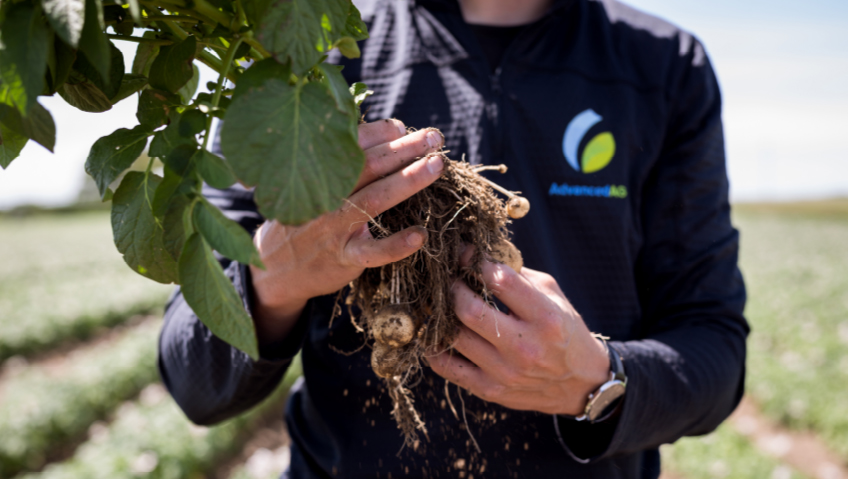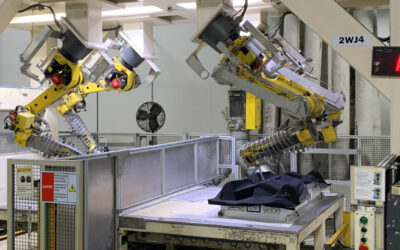Canada is one of the world’s biggest food producers, responsible for nutritious crops like wheat, corn, canola, rye, malt barley, soybeans, beets, and potatoes, to name a few. Pulses such as peas and lentils, chickpeas and beans—staples of Canadian farmers—are packed full of health-giving protein, fibre, and iron.
Agriculture and agri-food are vital contributors to the country’s economy, employing an estimated 2.1 million people, and generating Can $134.9 billion, approximately 6.8 percent of Canada’s gross domestic product (GDP).
To achieve this, many of the country’s 189,874 farms, whether small or large, use chemical fertilizers to enrich their soil, provide plant nutrition, and increase crop yields. Used for decades, some chemical fertilizers contain potassium, ammonium phosphate, and nitrogen, used in the formation of protein.
So the Government of Canada’s announcement that it was targeting a 30 percent reduction in nitrous oxide emissions from synthetic nitrogen fertilizer by 2030 to reduce greenhouse gases met a fiery reaction from farmers and associations like the Alberta Wheat Commission.
Calling for greater clarity, the Commission said the 2030 target “has fueled confusion and frustration due to a lack of clarity on what will be measured and how,” adding that farmers were not consulted over the proposed nitrogen reduction, which is aimed at “what seems to be an arbitrary and unachievable target.”
Some, like Joshua Day Chief, CEO at AdvancedAg, and son of the founder, Dr. Phyllis Day Chief, believe farmers suspected that limiting nitrogen in fertilizers was inevitable, but there was uncertainty over when it would happen.
“I felt a lot of farmers knew something like this was coming,” says Day Chief. “And whether or not they thought it was going to be federally mandated—even for their own farms—they knew what they were doing for years wasn’t sustainable. It just wasn’t.”
The future of farming
Described as “A family-owned Canadian business to the core,” AdvancedAg was created in 2016, yet the roots of the company go much deeper than that. Beginning long before the company—and its unique focus on using innovative, cutting-edge biology to improve soil and water health—even existed, founder Dr. Phyllis Day Chief worked at Alberta’s Lethbridge College as a technical writing instructor for almost 35 years.
Working with other entrepreneurs across North America, Phyllis saw a new technology being developed out of Cleveland, Ohio, for cleaning wastewater and ponds. Approaching the supplier, she asked if anyone in Canada was working with the product. The supplier replied by asking her why would anyone want to treat bodies of water that are frozen half the year.
Through her college connections, Phyllis met Cal Koskowich, Industrial Technology Advisor at National Research Council Canada, and formed a partnership with Lethbridge College’s Aquaculture Centre of Excellence.
“During the early stages of our business, we partnered with them, and the research we were doing turned out to be quite important,” says Day Chief. Now 36, Joshua remembers helping at AdvancedAg as a kid, moving boxes and getting a feel for the Indigenous-owned business and its research. Later, attending Lethbridge College and graduating from the Environmental Assessment and Restoration program, he briefly worked in the reclamation industry before entering the family’s business full-time in 2014.
“It was mom and I, and we were focused on water treatment at the time, setting up presentations to talk to municipalities,” he says. “Our bacteria are capable of so many things depending on how we grow them, but we decided we wanted to focus on water remediation—large lake and storm pond remediation for municipalities—rather than spread ourselves too thin,” says Day Chief.
Growth throughout Canada
Making annual trips to Cleveland to meet with their head scientist and suppliers, AdvancedAg was shown a biotechnology that was being used on high-value crops such as pineapples, avocados, aloe vera, and bananas, centred mainly in developing countries where crops were treated with backpack sprayers.
However, the company also knew that the research it was conducting, and the bacteria it was culturing for large-scale operations, were relevant to Canadian crops and conditions. So, the next year, AdvancedAg applied the technology to a farm and saw positive results right away.
Partnering with several third-party consulting agencies and research centres to get replicated trial work done on the crop side of things soon saw data come back. “It was incredible how the bacteria were responding in the soil, producing larger plants and roots and increasing overall biomass, which was leading to healthier crops,” says Day Chief.
“So that’s really where it all started. Being here in Canada, in such a small, tight-knit community of agriculture—I’d say not just in the prairies, but across Canada coast-to-coast—you’re probably only a couple of people away from knowing everyone in the agriculture industry.”
Word about the company and its results spread quickly, and Day Chief was approached by farmers who said they wanted to focus on their soil health and soil biology—that they had hit a wall. Already using too many expensive chemical fertilizers and synthetic products, they were compelled to use more and more to get better crops.
Soon, circumstances prompted them to begin envisaging AdvancedAg as a leader in improving soil and water through 100 percent natural, organic-certified products, supported by decades of research and innovation. “Since 2016, we now have about 50 locations brewing our bacteria across the country,” Day Chief says, “and we have a couple in the U.S. as well. It’s really taken off for us.”
In 2020, AdvancedAg won the Environmental Stewardship Award, as well as the Technology and Innovation Award in 2022 at the Lethbridge Chamber of Commerce Business of the Year Awards. The company is now being considered by the Alberta Chamber of Commerce for the Indigenous Business of Distinction Award.
Natural by nature
The team at AdvancedAg sees a day soon when its all-natural bacteria products are widely available—ideal for both small and large farming operations, parks and recreation, golf courses, water treatment, and home and garden. AdvancedAg has recently launched a retail division for customers outside of large-scale agriculture called A*LIVE Bio. The company is now in many SiteOne Landscape Supply locations, helping customers create more vibrant and healthier lawns, gardens and flowers.
“It’s not just farmers that need a better way to grow things,” says Day Chief. “Other people want that too, to put something on their lawn or garden that’s safe enough to have your kids or dogs run right through it after applying. With a lot of chemical fertilizers, they can’t do that. We’re seeing huge growth on the retail side as well.” (As an aside for home gardeners, Day Chief notes that the product also works well to repair dog urine burns on grass.)
At present, the company’s line of eco-friendly “A*LIVE” bioproducts are available at 15 SiteOne locations in Western Canada and should soon be in other stores across the country.
“A consortium of function-focused microbes”
The bacteria in AdvancedAg’s ACF-SR “perform key functions in the soil, including fixing nitrogen from the atmosphere, solubilizing essential nutrients, such as phosphorus and potassium, and producing phytohormones, which provide the full spectrum of plant growth promoting (PGP) functions in the soil,” according to the company.
“Yet it isn’t a fertilizer that you apply to your lawn and it’s lush in a day or two,” emphasizes Day Chief. “It can sometimes take a couple weeks. We’re fixing the soil for improved root development so plants can grow healthier for longer, using sustainable practices and technology.” He also says the company is moving away from the word “bacteria,” using “microbes” instead, since bacteria seem to have a negative connotation for some.
“What we’re using is a consortium of function-focused microbes,” says Day Chief. “Each species of microbes we use has one or many functions for plant growth. And when we use similar ones for water treatment, each one of those species has a function for nutrient cycling, like breaking down solids, or outcompeting algae for food,” he explains.
“It’s just incredible how we are able to train these bugs. We put them through a series of tests so we know what they’re going to do when we apply them, and that’s also something that separates us from many other biological products.”
Saving money and nurturing growth
Along with being better for the environment and free from chemicals, AdvancedAg’s products are considerably cheaper than fertilizer, resulting in cost-savings for farmers and other customers.
“Even if we are able to achieve the same yields as farmers had before, but they’re cutting back 20 percent of their fertilizer, that’s money in their pocket,” he says. “We also know the quality of the crops is much higher, and long-term, it’s also an investment in their soil, so their kids can take over the farm in a better spot than where their parents and grandparents left it.”
Through AdvancedAg’s products, farmers are saving money and nurturing future growth by building root development and increasing available nutrients in the soil, seeing better results year after year.
“The farmers who have used ACF for multiple years are seeing better results than the first year,” says Day Chief. “We’re really changing things in the soil, so it’s more of a regenerative approach, compared to historically, where farmers were putting down so many pounds of fertilizer and hoping for big yields that year.”
Along with improving overall soil conditions for farmers, AdvancedAg’s products are being used by municipalities to improve the condition of water in storm retention ponds, which are used to collect nutrients and waste. “You have green spaces, parks, baseball fields, people’s lawns. We know that only roughly 40 percent of all nitrogen applied to any type of crop is used by the plant; 60 percent of that runs off into our water, and about 50 percent of phosphorus is used by the plant, so these fertilizers aren’t very efficient,” Day Chief explains.
“We know that by using bacteria and utilizing what’s already in the soil and atmosphere—as opposed to putting something on—plants are going to use nutrients efficiently and we’re going to have zero harmful runoff at all,” he says.
AdvancedAg isn’t out to replace synthetic products such as fertilizer—which is extremely important, although it has had bad press in the mainstream media. The issue, says Day Chief, is that producers have become over-reliant on synthetic chemicals because there has been a lack of options to meet yield requirements.
“We are just hoping to create more of a balance, and we know we can cut back [on fertilizer] and put something else in place where we’re going to get a better long-term result,” he says. “It’s a balance. I think agriculture, and the way we’ve been fertilizing and using chemicals, has been way off balance over the last 50 years.”













